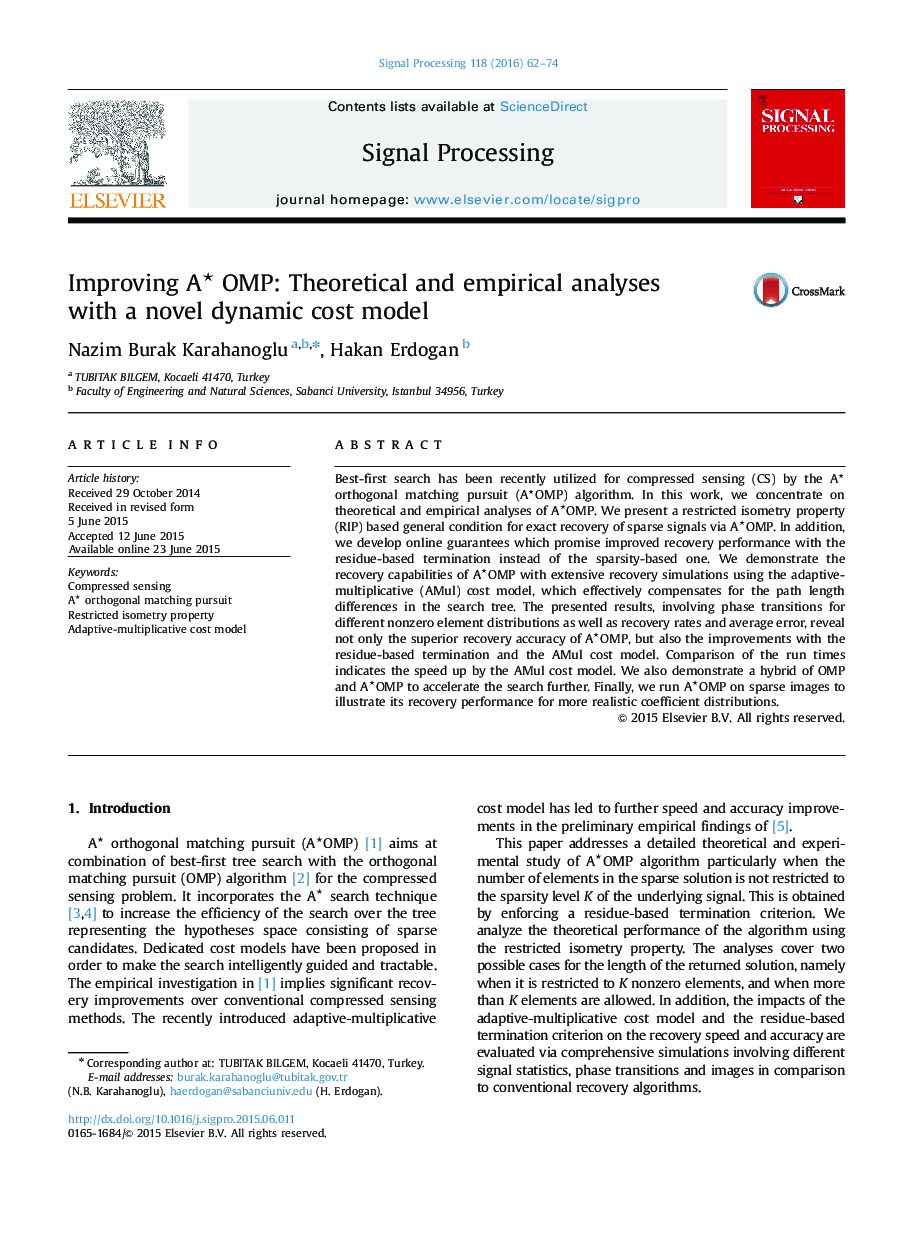| Article ID | Journal | Published Year | Pages | File Type |
|---|---|---|---|---|
| 566284 | Signal Processing | 2016 | 13 Pages |
•We analyze the empirical and theoretical performance of A⋆OMPA⋆OMP in sparse recovery.•RIP-based theoretical analysis provides recovery guarantees for A⋆OMPA⋆OMP.•The introduced novel dynamic cost model improves recovery performance significantly.•Results of computationally expensive experiments are presented by phase transitions.•A⋆OMPA⋆OMP outperforms conventional methods in a wide range of sparse recovery scenarios.
Best-first search has been recently utilized for compressed sensing (CS) by the A⋆A⋆ orthogonal matching pursuit (A⋆OMPA⋆OMP) algorithm. In this work, we concentrate on theoretical and empirical analyses of A⋆OMPA⋆OMP. We present a restricted isometry property (RIP) based general condition for exact recovery of sparse signals via A⋆OMPA⋆OMP. In addition, we develop online guarantees which promise improved recovery performance with the residue-based termination instead of the sparsity-based one. We demonstrate the recovery capabilities of A⋆OMPA⋆OMP with extensive recovery simulations using the adaptive-multiplicative (AMul) cost model, which effectively compensates for the path length differences in the search tree. The presented results, involving phase transitions for different nonzero element distributions as well as recovery rates and average error, reveal not only the superior recovery accuracy of A⋆OMPA⋆OMP, but also the improvements with the residue-based termination and the AMul cost model. Comparison of the run times indicates the speed up by the AMul cost model. We also demonstrate a hybrid of OMP and A⋆OMPA⋆OMP to accelerate the search further. Finally, we run A⋆OMPA⋆OMP on sparse images to illustrate its recovery performance for more realistic coefficient distributions.
